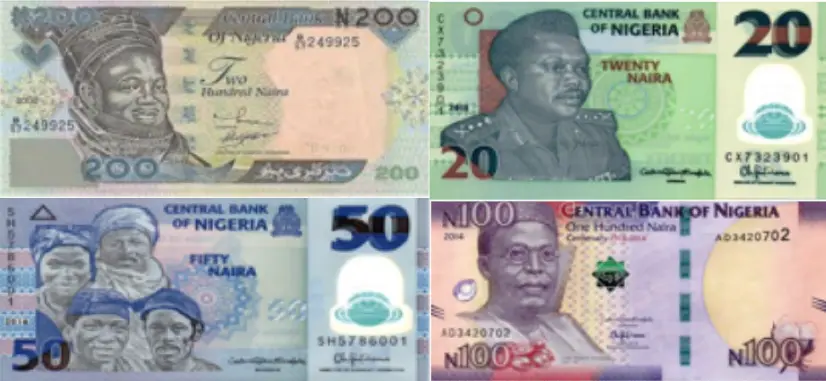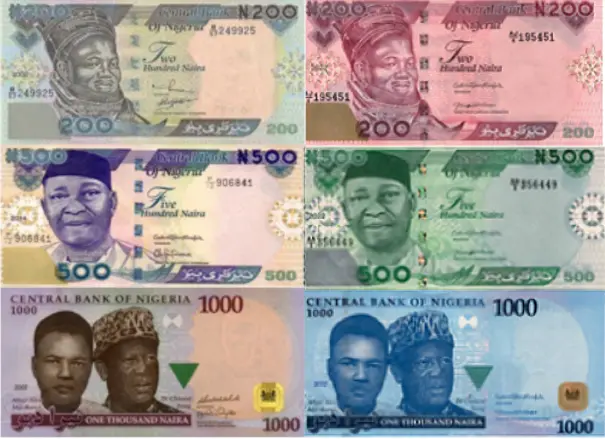Naira is a currency used in Nigeria, a country in Africa. Naira notes are printed by Nigeria Security Printing and Mining and sometimes other companies overseas but is issued by the Central Bank of Nigeria (CBN). The CBN has an office called the Mint Inspectorate which is in charge of the control and receipt of finished Naira banknotes and coins
The currency is issued to Deposit Money Banks (DMB) through a branches of CBN. And when is it deposited in the CBN by DMB, it is then sorted into fit and unfit notes inline with the clean notes policy and unfit notes are retrieved through the same medium.
In this article, I will tell you some things you need to know about the Naira and also the history of Naira. So just keep reading on.

Means Of Exchange During The Pre-Colonial Era.
During the pre-colonial era, different cultures use different items as means of exchange. And they are;
- Salt.
- Beads.
- Bottles.
- Manilas.
- Cowries, etc.
Security Features Of Naira Notes.
The Naira notes have security features to enable the easy recognition of genuine notes. And the features can be recognized by touch and visibility are the raised print, the security thread and also the watermark.
The raised print provides tactility and security thread although it looks broken but is not when it is held against light, has “CBN” printed on both sides.
The Naira notes are protected against photocopying, and there are also features that are visible under light. For example, the serial number on the Naira note is black but turns green under light.
The Naira Notes.
- There is 5 Naira.
- 10 Naira.
- 20 Naira.
- 50 Naira.
- 100 Naira.
- 200 Naira.
- 500 Naira.
- And 1000 Naira.
I want to ask you a question, what can N10 buy in your area. Leave your answer in the comment section below.

History Of The Nigerian Naira.
The first major currency that was issued in Nigeria was undertaken sequel to the colonial ordinance which introduced the shillings and pence as the legal tender currency in British West Africa. The units of coins managed by the Bank of England were one shilling, on penny, 1/2 and 1/10 penny and were distributed by a private bank, the Bank of British West Africa till 1912.
Then from 1912 to 1959, the West African Currency Board issued the first banknotes and coins in Nigeria, Ghana, Gambia and Sierra Leone. The highest banknote denomination was one pound, while the one shilling coin was the highest coin denomination.
On July 1,1959, the Central Bank of Nigeria issued Nigerian currency banknotes, while the WACB -issued banknotes were withdrawn. It was not until 1 July 1962 that the currency was changed to reflect the country’s republication status. The banknotes which bore the in inspection, Federation Of Nigeria, now Federal Republic Of Nigeria, inscribed at the top. The notes were again changed in 1968 following misuse of the current during the civil war.
On Feb. 11 1977, a new banknote with the value of N20 was issued. It was the highest denomination introduced at the time as a result of the growth of the economy, the preference for cash transaction and the need for convenience.
On July 2, 1979, new currency banknotes of three denomination, N1, N5 and N10 were introduced. These notes were of the same size as the N20 note. In order to facilitate identification, distinctive colours were used for the various denominations. The notes bores the portrait of three eminent Nigerian, who were declared national heroes on 1st Oct. 1978. The engravings at the back of the notes reflected various cultural aspects of the country.
In response to the expansion in economic activities and to facilitate an efficient payment system, the N100, N200, N500 and N1000 banknotes were intorduced in December 1999, November 2000, April 2001 and October 2005 respectively.
On Sep. 30 2009, the redesigned N50, N10 and N5 banknotes were converted to polymer substate following the successful performance of the N20 banknote. All lower denomination banknotes were now printed in the polymer substate.
So I just managed to cut the long story short… Please clap for me.
Related:
So was this helpful, leave a question or contribution in the comment section below. And you can also share this post on Facebook, Twitter, etc to enlighten others.